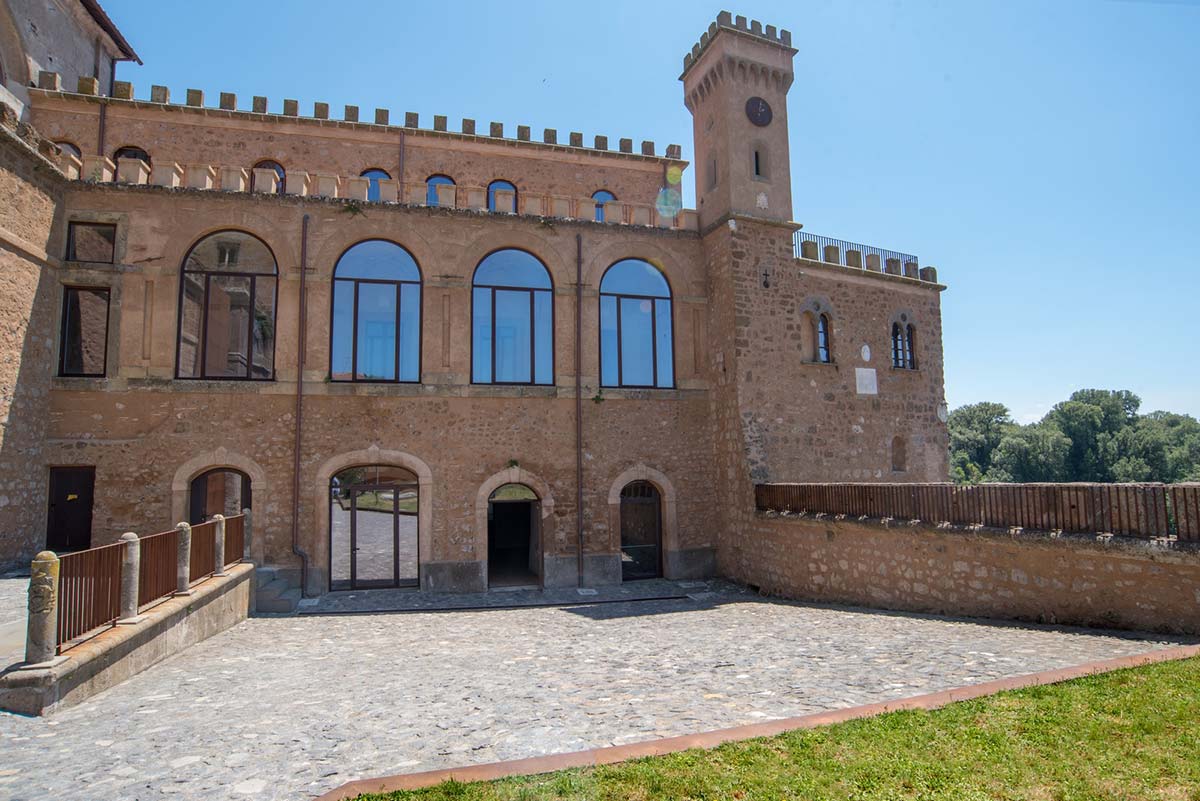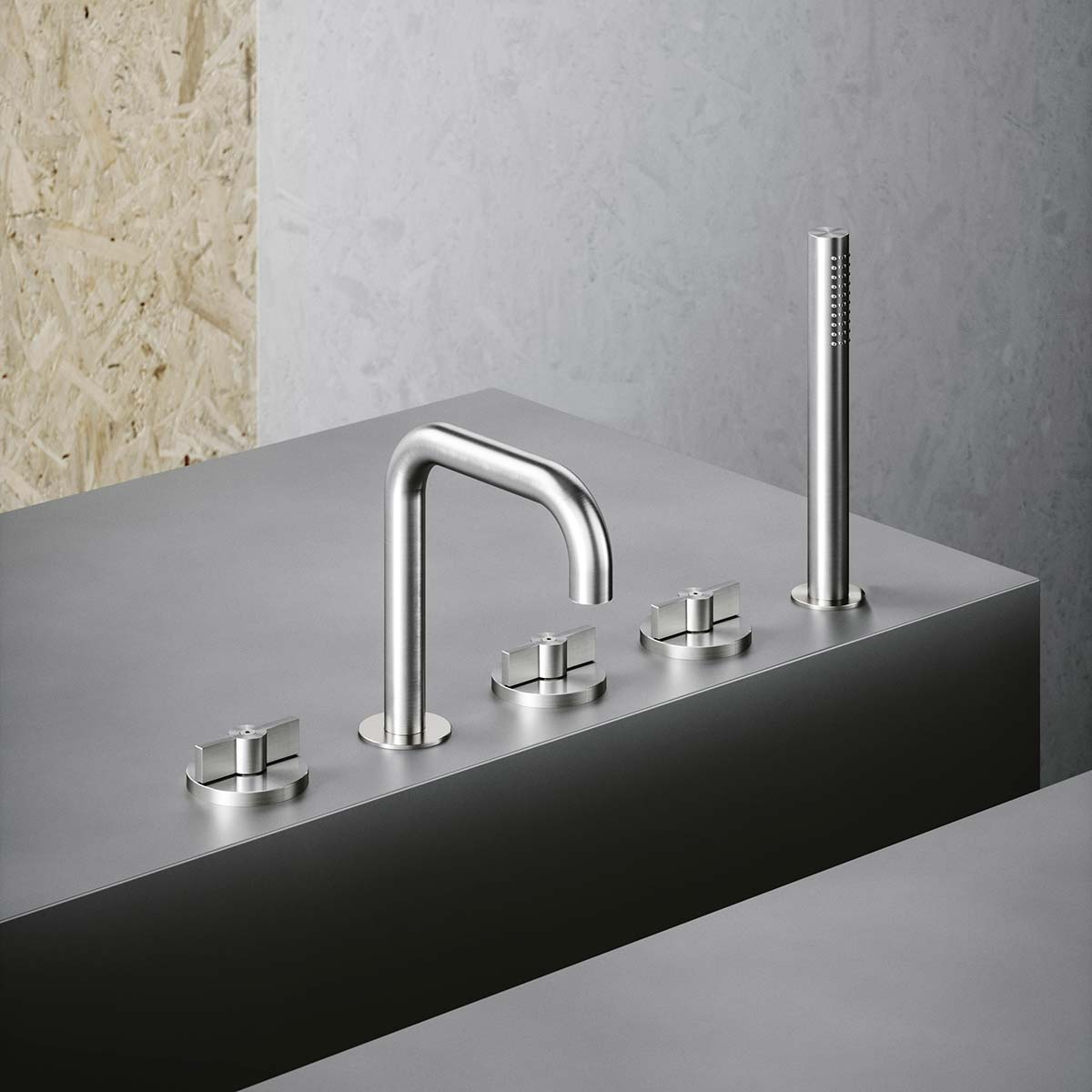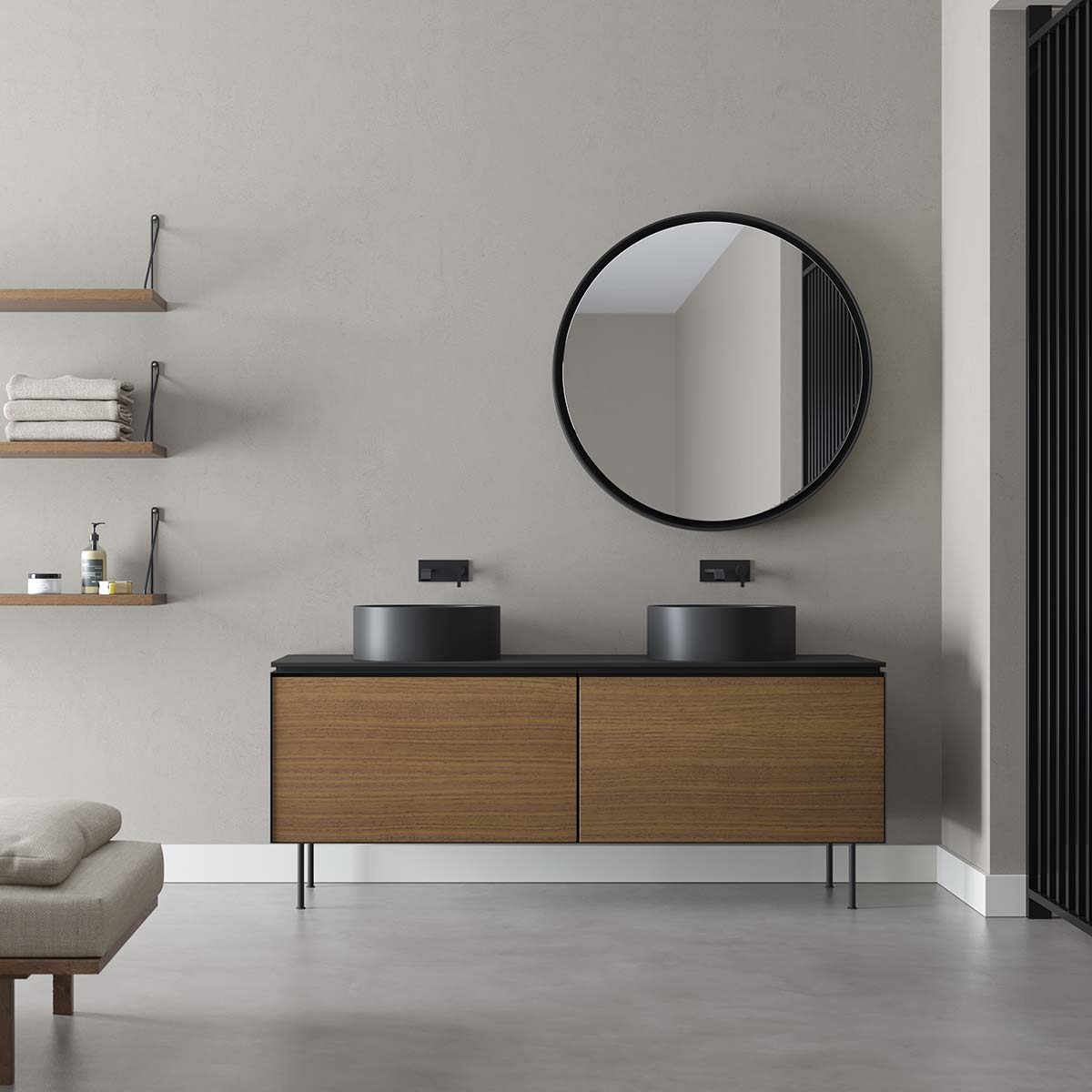To still savor the genuine traditions of the territory and the family, making them into particular aspects inserted in everyday design practice. Inside Studio Adolini this is the dominant atmosphere as well as the current practice, for a studio that has become a “family affair” where heritage is mixed – and sometimes clashes – with the verve of a second generation.
“It’s a situation out of folklore,” Niccolò Adolini ironically remarks, after growing up observing and learning from his father, Romano Adolini. “When the two of us bicker it amuses all the young people working in the studio. Our interaction can obviously lead to opposing visions in the approach to various projects. He is more of a traditionalist, while I am more fearless about getting out of our comfort zone, coming into contact with new companies and new design themes.”

Palazzo Doebbing, Sutri, Italy – Photo © Claudia Cavallo
But the studio’s force relies precisely on this dualism, not overlapping but compensating in its dynamics. Romano Adolini represents the architectural side of the coin: his works – usually connected to his native territory of the lower Viterbo zone, but also covering works of architecture on a large scale – rework the local legacy of construction, often in conservative restorations that protect all the charm of the original design. One emblematic example is Palazzo Doebbing in Sutri, taken back to its original splendor thanks to a project that has lasted about 20 years, in collaboration with the mayor Vittorio Sgarbi.
The other half is Niccolò Adolini: a passion for product design (at first he worked in the studio of Rodolfo Dordoni) that has exploded over the years in collaborations with Italian and foreign companies (with a focus on the Brazilian market), and an aptitude for design culture that has opened the doors of the IED in Rome – where he teaches – and ADI Lazio, where he is the vice-president.

Private residences, Civita Castellana, Italy

Amarcord by Martinelli Luce, Design Adolini & Simonini
A perfect symbol of this aptitude, but also of his personality, is the Amarcord lamp designed for Martinelli Luce: “Before the pandemic, I usually spent one month and half per year in China to teach at the Sichuan Normal University in Chengdu. The students would bring me all kinds of Chinese technology, as it was being discovered: I tried to give them advice to develop projects inside the university, but at the same time I drew on their most interesting suggestions, bringing them home. This is what happened with the technology I applied to Amarcord, which then became an American patent, though I saw it for the first time in Chengdu: the pieces utilizes transparent Plexiglas that contains macro-molecules that transport light across the whole surface; when it is off it is completely transparent, and when you turn it on the light spread through the plexiglas. When I saw it in China, applied to office dividers, I thought it could be warmed up without altering the nature of the material: so I brought it to Emiliana Martinelli and we began to work on the Amarcord project.”
Lighting is just one of the fields of research of the studio, where they also have a specialization in ceramic sanitaryware. This is primarily due to the industrial district of Civita Castellana, a worldwide leader in this sector: “The zone is rich in clay, and there are many wooded areas that provide fuel for the kilns. We might say that this district is to ceramics as Brianza is to furniture. My father already had the first contacts here with many local companies, and he delved into the production and the design. Then, in the 1990s, there was a real explosion of this sector, with the arrival of international names summoned to collaborate with various firms in the district. So we have continued to specialize in this field, although my goal is to expand into other areas.” An example of this expansion is the Valvola 01 faucet for Quadro, selected for the Compasso d’Oro 2022.

Valvola 01 by Quadro, Design Studio Adolini

Fluo collection by Ceramica Flaminia, Design Niccolò Adolini
Staying with the main theme, however, the new entry for 2021 is the Fluo collection for Ceramica Flaminia: “A collection that is a tribute to ceramic material, but goes against the current trends towards extreme design, with ultra-slim borders and minimal forms. This tendency often means that in the production phase two thirds of the items are scrapped due to problems or defects. Flou, on the other hand, with its soft edges, comes out of the mold in a totally natural way, so it requires no retouching, not even in the finishing phase. The result is a more economical collection, in terms of manufacturing, and a more sustainable product, where form perfectly follows function.”
The ability to create extremely functional furnishings, minimal in style, and above all of impeccable quality, is undoubtedly the main point of contact between the two generations in the studio. This is a trait d’union neither of the two designers would want to squander or endanger.

Kukà by Talenti, Design Studio Adolini

Lama by NIC Design, Design Studio Adolini
“From my father, I have learned to present a perfectly functioning prototype, in actual size, to every company with which we work or hope to work: in this way, the company can be fully aware of what is to be created. For us, manual work and prototypes make the difference: this is why our studio becomes a sort of workshop, connected to the crafts firms that surround us, from which we can obtain maximum practical support. This allows us to have great flexibility and know-how in our projects. Constant interaction is a must: it is the only way you can make something that works.”
An interaction that emerges from the studio and spreads in the outside world, in a network of experiences that all speak the true language of Made in Italy.









